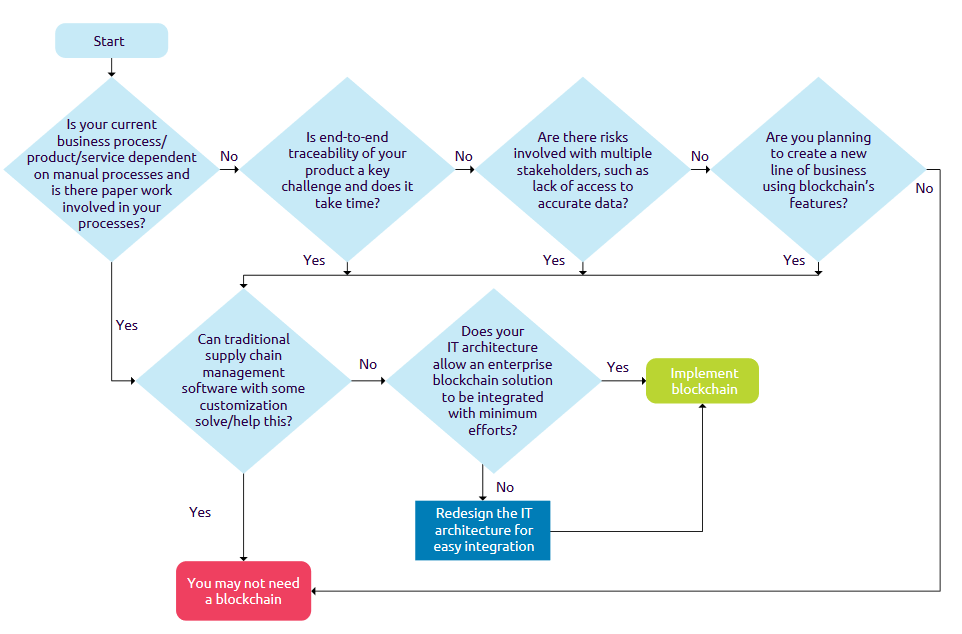Blockchain could help supply chain step into a new era. The customers’ growing demands for traceability and authenticity are not receiving adequate answers in the traditional supply chain. Product theft and counterfeiting take time to investigate down to the point of occurrence. However, blockchain could provide a transparent and efficient solution to these problems.
This is the premise of the latest Capgemini report. The research company surveyed 450 companies across the globe, focusing particularly on these three issues:
- How they believe blockchain can help them improve their supply chain;
- In which way they currently use the technology in their operation;
- How they envision the best practices for an efficient blockchain program.
The Global Supply Chain Needs to Address Critical Issues
The supply chain is riddled with problems, as international trade becomes more complex. Some of the most important issues at the moment are:
- Lack of product traceability;
- Manual processing;
- Risks connected to multiple stakeholders;
- Slow response;
- Regulatory compliance issues.
Blockchain could solve these issues thanks to its structure: a decentralised, shared ledger where every party holds a complete set of data.
Capgemini identified real life use cases demonstrating the role of blockchain in improving supply chain transparency. For instance, Walmart uses blockchain to trace leafy greens back to their farm of origin. Similarly, Carrefour traces free-range Auvergne chicken to guarantee place of origin.
The Current State of Blockchain Adoption
At the present time, only 3% of organisations have deployed blockchain at full scale. The majority – 87% – are at an early experimental stage. The rest 10% have a pilot program in at least one location.
This adoption rate shows that the technology underpinning Bitcoin may not be mature enough just yet. In addition to that, organisations still need to determine the key best practices for implementation. Some of those are:
- Type of blockchain they will implement: public (permissionless) or private (permission based);
- Data distribution type: broadcast, channels, peer-to-peer;
- Governance issues: ecosystem, deployment, technology, ownership.
In terms of adoption rate by industry, the Capgemini survey indicates that:
- Manufacturing leads in the at-scale implementation phase with 6%;
- Consumer products organisations have most pilot programs – 15%:
- The retail industry is largely in the experimenting phase – 91%.
Capgemini survey also shows the countries with the largest adoption rates of the technology. Those are:
- 22% – United Kingdom;
- 18% – United States;
- 17% – France.
Key Benefits Identified by Organisations
Even though they are not ready to integrate blockchain into their supply chain operations yet, most of the surveyed companies recognised its key benefits. Specifically, those benefits are:
- 89% – cost savings;
- 81% – enhanced traceability;
- 79% – more transparency;
- 57% – increased revenues.
The report indicates practical use cases of blockchain in the supply chain to improve customer confidence. For example, smart tags enable each stakeholder to add information to the distributed ledger for individual product. The end customer could scan this tag with their mobile phone and trace the entire journey of the product, from the point of origin to the store shelf.
In this way, blockchain can help fight against another key problem of the supply chain: counterfeit products. In other words, by tracing every part down to the raw materials used to make it, organisations can establish a clear proof of origin.
Steps Needed to Adopt Blockchain in Supply Chain
The Capgemini report also suggests a series of steps for organisations that explore the potential adoption of supply chain. To begin with, they need to determine whether they need this technology using the chart below:

After that, the next steps are:
- Assessing the readiness of the organisation for blockchain adoption;
- Preparing the adoption strategy based on the market position;
- Determining the key performance indicators;
- Implementing tight security controls;
- Joining a consortium in order to achieve standardisation.
Even though they are not ready to integrate blockchain into their supply chain operations yet, most of the surveyed companies recognised its key benefits.
The answers of surveyed organisations indicate that they are not yet aware of the importance of these steps. For instance, 92% of the respondents said that lack of a clear ROI is an important obstacle to blockchain implementation. However, this should not be the main key performance indicator in implementing new technologies. That is because it does not capture the wider impact of emerging technologies
, according to the Capgemini researchers.
A Potential Adoption Timeline
Based on the respondents’ adoption phases, the Capgemini researchers believe that blockchain will be adopted according to following timeline:
- 2011-2018 – the initial awareness phase;
- 2017-2020 – the experimentation phase;
- 2019-2025 – the transformation phase.
For a visual overview of the Capgemini research, take a look at the infographic below:

To keep up with the latest crypto and blockchain news and updates, subscribe to our weekly newsletter. If you want to learn more about the technology behind Bitcoin, click here.